ANABOLIC STEROIDS, HEALTH
Anabolics and Understanding Blood Tests
Last Updated on March 18, 2024 by
Anabolics and Understanding Blood Tests, what to look for, and how to do it.
When people ask me about starting steroids/cycling, I always tell them to get blood work done.
Unfortunately this is met with a lot of resistance, and some people just don’t see the value in doing this.
I promised a blog response, and I’ll give it to you here.
This is what I’ve learned over the years through trial and error, good individual knowledge, and reading…a ton of reading.
Most people understand that steroids come with risks. This is why its so important to get a base, or starting point of where you are BEFORE you begin. Then you can find out if you have healthy blood levels, see where they are at your starting point, and see if you have any warning signs BEFORE you begin so you can address them correctly.
Then we have something to compare it to when we do our later comparison. It is far easier to see what the cycle is doing to your body when re testing blood work during the cycle.
The last Blood work will be done post cycle, again to test and monitor health and regeneration of normal blood levels.
******Some people are using Roid test kits, See out new Video Series HERE
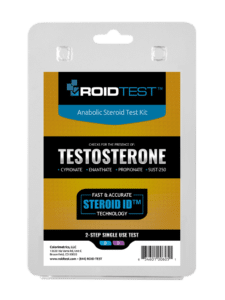
That is a great option to test a Lab (UGL) out of the gate. That being said, I have always gone on feel and blood work. I go on the reputation of a brand, then I monitor my results and my bloodwork. You will be able to see differentials in your blood results and monitor that instead of trying to test every vial.
What I do think is that some of the vials may be / are “off does” or incorrectly dosed. Some may be higher, some may be lower. Im personally not going to test every vial. Once Im using a brand (lab) for some period of time Im certainly not going to test everything. I just continue to go off my blood test results and how Im feeling, my progress etc. If I feel like the brand (lab) is not performing I switch. It’s that simple.*******
WHAT AM I LOOKING FOR IN A BLOOD WORK?
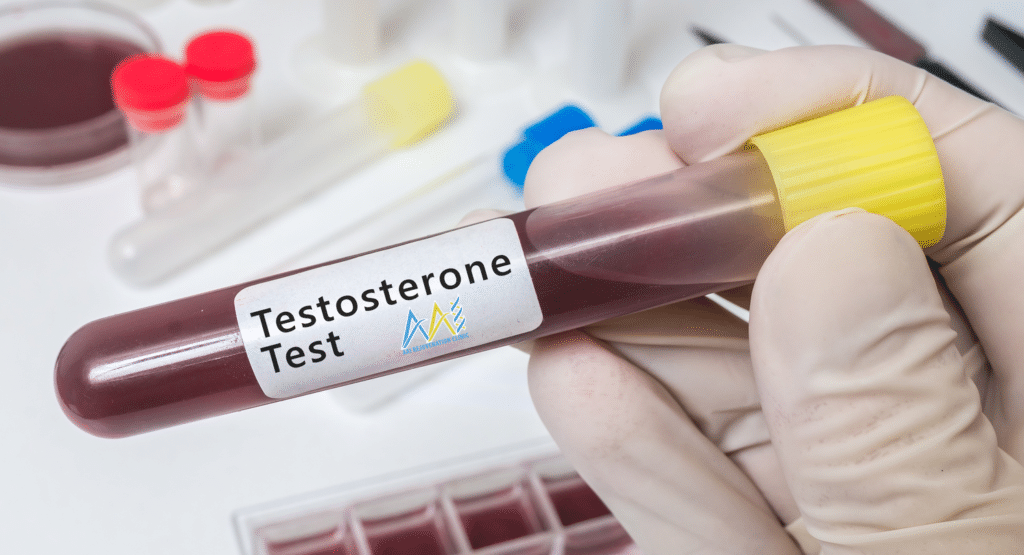
PRE CYCLE
This is where we start first to make sure there are no pre existing health conditions that will make the matter worse by use of substances. This also gives us a base to compare our on cycle / off cycle results.
Below Is THE MINIMUM Results We Will Want To Check And See Results For:
- Hormone (Steroid
- Lipids (Standard Full Set)
- Full Liver Panel
- Blood
- Kidney
- Electrolytes, Minerals, and Glucose
- Prostate
ON CYCLE
This testing is usually conducted 3 to 4 weeks after the steroid cycle has started.
It is with these tests that will most reflect the changes made by the steroid cycle.
It is important to note any adverse side effects and take into account that if used over time how that will impact overall health.
Below Is THE MINIMUM Results We Will Want To Check And See Results For:
- Lipids (Standard Full Set)
- Full Liver Panel (if taking hepatotoxic steroids)
- Blood
- Kidney
- Electrolytes, Minerals, and Glucose
POST CYCLE
The Post Cycle Test will determine is your male steroid hormone has returned to pre cycle levels. There will always be some variation on this test and an exact match will be almost impossible. It is also recommended to look at the LH and FSH pituitary in the case of the blood coming back low, it is easier to determine the cause. High LH/FSH and low testosterone (primary hypogonadism) may simply indicate that your testicles have not yet fully restored their mass. Alternatively, low LH/FSH can indicate secondary hypogonadism, which is often cause to initiate corrective therapy with an endocrinologist. Other general indicators of health are also conducted here including lipids, liver, blood, kidney, electrolytes, minerals, glucose, and prostate.
Below Is THE MINIMUM Results We Will Want To Check And See Results For:
- Hormone (Steroid, LH/FSH)
- Lipids (Standard Full Set)
- Full Liver Panel (if taking hepatotoxic steroids)
- Blood
- Electrolytes, Minerals, and Glucose
- Prostate
CREDIT** – Below is an abbreviated version of William Llewellyns ANABOLICS 9th ed.
There are many versions of this book available. I highly recommend you picking yourself up a copy. If you are dedicated enough to start using Anabolics, then you should be dedicated enough to read a book about what you are about to do.
Blood Work Categories
Hormone
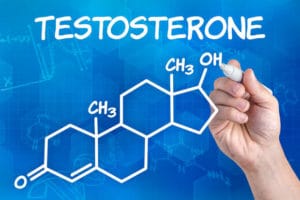
Steroid (male)
Test Name
Testosterone, Total
Reference Range – 241 – 827 ng/dl
Testosterone, Free
Reference Range – 8.7 – 25.1 pg/ml
Estradiol
Reference Range – 10-53 pg/ml
LH/FSH Panel (male)
Test Name
LH
Reference Range – 2.5 – 9.8 IU/L
FSH
Reference Range – 1.2 – 5.0 IU/L
Steroid (male)
Test Name
Testosterone, Total
Reference Range – 241 – 827 ng/dl
Testosterone, Free
Reference Range – 8.7 – 25.1 pg/ml
Estradiol
Reference Range – 10-53 pg/ml
Steroid: This testing will look at both total and free testosterone. The former measurement is used by physicians to identify the androgen level and determine if there is a need for therapy. The latter measure actually represents the fraction of bioavailable (immediately active) testosterone in the body, and is consequently regarded as more important for assessing the present state of androgenicity. Estradiol is the principle active form of estrogen in the body, and has roles both in potential side effects (gynecomastia, water/fat retention) and hormone balance. This is the estrogen marker most often recommended during hormone profiling.
LH/FSH Panel: Luteinizing hormone (LH) and follicle stimulating hormone (FSH) are responsible for stimulating testosterone production and spermatogenesis in the testes. These measures are most relevant when evaluating the cause and potential treatment options for hypogonadism, not the short-term health impact of anabolic-steroid use. The short-term suppression of LH/FSH is expected with anabolic/androgenic steroid administration.
Thyroid: It is regarded as important to get a baseline measure of thyroid activity, usually once per year. Follow up tests during and after steroid use may be an expense some view as unnecessary. Anabolic/androgenic steroid use is unlikely to permanently affect thyroid function, but may slightly elevate thyroid levels during therapy. A misdiagnosis of hyperthyroidism (overactive thyroid) is sometimes made in light of these elevated numbers. The effect of anabolic/androgenic steroid use on thyroid levels should be taken into account before treatment for hyperthyroid is ordered.
Lipids (Cardiovascular)
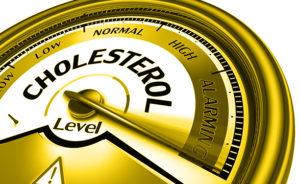
Anabolic/androgenic steroids can have strong adverse effects on lipids. The abuse of anabolic/androgenic steroids (particularly long-term abuse) can, likewise, increase the risk for developing cardiovascular disease as assessed by these variables. Mitigating these risks with the careful examination of the lipid profile is regarded as one of the most fundamental of all steroid-related blood tests. While far from comprehensive with regard to assessing total heart disease risk, a full panel examining the variables below (and comparing them to your baseline values) can provide a good snapshot of the cardiovascular impact of anabolic/androgenic steroid use. It is important to measure your blood lipids only after 12 hours of fasting, as food intake can skew the outcome of some measures (particularly triglycerides).
Standard Full Set
Test Name Reference Range
Triglycerides
Reference Range – 0 – 149 mg/dl
Cholesterol, Total
Reference Range – 100 – 199 mg/dl
HDL Cholesterol
Reference Range – >40 mg/dl
VLDL Cholesterol
Reference Range – 5 – 40 mg/dl
LDL Cholesterol
Reference Range – <100 mg/dl
LDL/HDL Ratio
Reference Range – <3.6 mg/dl
LDL/HDL Ratio Risk Assessment
1/2 Average Risk
Men 1.0 Women 1.5
Average Risk
Men 3.6 Women 3.2
2x Average Risk
Men 6.3 Women 5.0
3x Average Risk
Men 8.0 Women 6.1
Additional Testing
Test Name
C-reactive Protein
Reference Range – <5 mg/dl
Homocysteine (0-30 years)
Reference Range – 4.6 – 8.1 umol/L
Men (30-59)
Reference Range – 6.3 – 11.2 umol/L
Women (30-59)
Reference Range – 4.5 – 7.9 umol/L
>59 years
Reference Range – 5.8 – 11.9 umol/L
Apo Ratio Testing
Apolipoproteins
apoB/apoA-1 Ratio
Reference Range – Men <.9 Women <.8
Apo Ratio Risk Assessment
Low Risk
Men <.7 Women <.6
Average Risk
Men .7 – .9 Women .6 – .8
High Risk
Men >.9 Women >.8
Standard Full Set: This is a standard full lipid panel examination. Ideally, all values should be kept within the normal ranges at all times during steroid therapy. Note that the LDL/HDL ratio is regarded as the most important measure of the serum lipid tests, as it reflects the ongoing balance between plaque deposition (LDL) and removal (HDL) in the arteries. The LDL/HDL ratio is used to more closely assess heart disease risk in individuals that have elevated LDL or total cholesterol levels.
Additional Testing: (-reactive protein and homocysteine are two additional markers that are important to examining cardiovascular health. (-reactive protein is a key indicator of inflammation in the body, and homocysteine is involved in blood clotting and LDL cholesterol oxidation. It is also advisable to include these two variables in your cardiovascular testing schedule.
Apo Ratio: Apolipoprotein ratio testing is also recommended. Although not commonly used in general medical practice, apolipoprotein testing is increasingly regarded as a more accurate predictor of cardiovascular disease risk than cholesterol testing. Apolipoprotein B (apoB) is found in all LDL particles, and is responsible for attaching these lipoproteins to the artery walls. Apolipoprotein A-I (apoA-1) is found mainly in HDL particles, and is responsible for initiating beneficial reverse cholesterol transport. ApoA-1 enables the HDL particles to pull cholesterol from the artery walls and transport them back to the liver. The ratio of apoB to apoA-I, therefore, appears to reflect a much truer measure of the balance of potentially atherogenic and antiatherogenic particles in the blood. A ratio above .9 is generally regarded as indicative of increased cardiovascular disease risk. Lower ratios reflect reduced cardiovascular disease risk assessments.
Liver Function
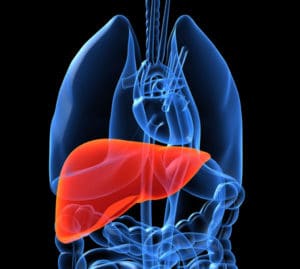
Test Name
Albumin
Reference Range – 3. 5 – 5.5 g/dL
Globulin
Reference Range – 1.5 – 4.5 g/dL
Total Protein
Reference Range – 6.0 – 8.5 g/dL
Bilirubin
Reference Range – 0.1 – 1.2 mg/dL
GGT (Gamma GT)
Reference Range – 50 IU/L
ALP (Alkaline Phosphatase)
Reference Range – 25 – 100 IU/L
AST (SGOT)
Reference Range – 0 – 40 IU/L
ALT (SGPT)
Reference Range – 0 – 55 IU/L
A full liver panel is important to assessing hepatic strain. The two markers of liver stress most commonly elevated in abusers of anabolic/androgenic steroids are the enzymes alanine aminotransferase (ALT) and aspartate aminotransferase (AST). ALT and AST are necessary to amino acid metabolism in the liver, and will leak into the bloodstream as the liver becomes inflamed or damaged.
These two enzymes are generally regarded as important indicators of early steroid-induced liver toxicity. There have been cases in which substantial liver damage has occurred without substantial elevations in ALT and AST, however, so a more detailed examination of liver enzyme values is always advised.
Alkaline phosphatase (ALP) and gamma-glutamyltranspeptidase (GGT) are known as cholestatic liver enzymes, which mean they diminish or stop the flow of bile (a greenish fluid that aids digestion and is produced in the liver).
ALP and GGT are important markers of liver health during steroid use, and should be included in regular blood testing. Elevations in ALP and GGT can indicate bile duct obstruction (intrahepatic cholestasis), which refers to a condition where the liver can no longer properly transport and metabolize bile.
Intrahepatic cholestasis is a potentially very serious manifestation of steroid-induced liver toxicity, so elevations in ALP and GGl should not be disregarded. Mild elevations in ALT and AST may be caused by muscle damage (exercise) and not steroid-induced liver toxicity.
A comparison to baseline levels will be important in determining the cause. If the only factor that has changed is the addition of a hepatotoxic anabolic steroid (training is otherwise steady), the drug is likely to blame. It is important to remember that ALP and GGT are not always elevated with early liver strain. Therefore, the elevation of any hepatic markers above the reference range (even if only ALT and AST) can indicate liver toxicity, and should be cause to discontinue the offending steroids and reassess risk.
Muscle Enzyme

Test Name
Creatine Kinase
Reference Range – 38-174 u/L
The creatine kinase (CK) enzyme is used as a marker of muscle breakdown, kidney damage, and heart damage. High levels usually indicate heart attack or other organ trauma. This enzyme can also become elevated with exercise that breaks down muscle tissue, especially intense endurance or resistance training.
Elevated CK levels caused by high intensity training are often mistaken for organ damage. It is important to further examine other markers of kidney and heart heath before such a determination is made. Note that creatine kinase levels may also be useful in determining if liver strain or heavy training is the cause of mild elevations in liver enzymes ALT and AST. Slight increases in ALT and AST caused by muscle damage will usually coincide with elevated CK and normal ALP and GGT levels.
Blood
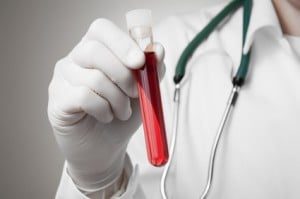
Test Name
WBC
Reference Range – 4 – 11 – K/MCL
RBC
Reference Range – 81 – 103 – FL
Platelet Count
Reference Range – 130 – 400 – K/MCL
Hemoglobin
Reference Range – 13 – 17 – g/dL
Hematocrit
Reference Range – 40.7 – 50.3 (men) – %
Reference Range – 40.7 – 50.3 (women) – %
A full blood count is one of the most commonly run blood tests, and can give you a good snapshot of overall health in many regards. A full blood cell test will give you a measure of white cell count (responsible for fighting infection), platelet count (vital to blood clotting and healing), and red blood cell count (responsible for carrying oxygen). Red and white cell counts will be further subdivided into various individual measurements, often referred to as a differential cell count. Hemoglobin is the specific carrier of gases in red cells, and hematocrit is a measure of the percentage of red blood cells in the total blood volume. Due to their effects on erythropoiesis, anabolic steroids tend to increase red blood cell count, hematocrit, and hemoglobin concentrations. While this may increase oxygen-carrying (aerobic) capacity, as the concentration of red blood cells increases so does the thickness of the blood. Elevated hematocrit can increase the risk of heart attack or stroke.
Kidney
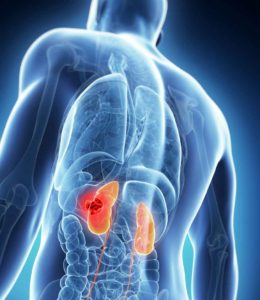
Test Name
Uric acid
Reference Range – 3.0 – 7.0 – mg/dL
Creatinine
Reference Range – .5 – 1.5 – mg/dL
BUN
Reference Range – 5 – 26 – mg/dL
BUN/creatinine
Reference Range – 8 – 27
This panel of tests looks at three primary waste products filtered and excreted through the kidneys, urea, uric acid, and I creatinine. Problems here can indicate serious underlying problems with kidney function. Note that Blood Urea Nitrogen : (BUN) is often elevated with excess protein consumption, and is used by many physicians as an indicator that too much , protein is being consumed for optimal metabolism. The high consumption of meat or creatine supplementation can also elevate creatinine levels, diminishing the value of blood creatinine testing as a marker of kidney health. Electrolyte, mineral, and fasting glucose testing is important to further assessing kidney health, and is advised in addition to the above kidney markers. A quick urine screen for pH, specific gravity, and the presence of sugar, blood, and ketones is also available at most physicians’ offices, and is generally advised alongside blood work when possible.
Electrolytes, Minerals, and Glucose
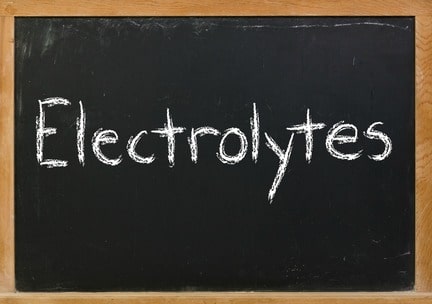
Test Name
Sodium
Reference Range – 136 – 146 – mEq/L
Potassium
Reference Range – 3.6 – 5.2 – mEq/L
Chloride
Reference Range – 98 – 109 – mEq/L
Bicarbonate (carbon dioxide)
Reference Range – 21 – 30 – mEq/L
Phosphorous
Reference Range – 2.5 – 4.5 – mg/dL
Calcium
Reference Range – 8.5 – 10.5 – mg/dL
Iron
Reference Range – 35 – 185 – mcg/dL
Glucose (fasting)
Reference Range – 70 – 110 – mg/dL
Electrolyte levels are examined to help detect problems with the fluid and electrolyte balance. Abnormal values may reflect something as small as sodium or potassium deficiency, or a more serious condition such as kidney disease. A variety of other health issues may also become apparent by looking at both electrolyte and mineral levels, giving them somewhat broad prognostic value. Fasting glucose is also examined to determine if the individual may be hypoglycemic (low blood sugar) or hyperglycemic (high blood sugar). Problems with fasting glucose may reflect potentially serious health condition including metabolic syndrome, diabetes, pancreati disease, liver disease, kidney failure, or acute stress.
Prostate
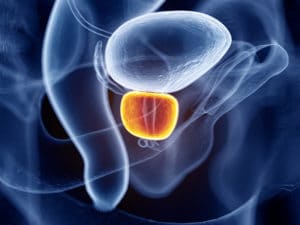
Test Name
PSA,serum
Reference Range – 0.0 – 4.0 – ng/mL
Prostate-specific antigen (PSA) is a protein produced by cells in the prostate gland. Its levels can become elevated in cases of benign prostate hypertrophy or prostate cancer. While it remains unknown if elevating the level of androgens in the body with anabolic/androgenic steroids can increase the risk of prostate cancer, it is known that I this disease can be progressed by elevated hormone (androgen and estrogen) levels. The PSA test is regarded as an important diagnostic tool for screening individual prostate cancer risk. If PSA levels are elevated, most will advise against using anabolic/androgenic steroids.
Check out my trusted source below, and check out my post on Where to buy steroids online and steroids for sale for more info. If you are new check out my post on what Im using at Im new to this where do I start
COUPON CODE: T20
COUPON CODE: ANABOLIC






284318 858027Wohh exactly what I was looking for, regards for putting up. 662750
I simply want to tell you that I am just all new to blogs and absolutely liked you’re blog. Very likely I’m likely to bookmark your blog post . You amazingly come with fantastic articles. Regards for revealing your web-site.
It is my very first time visiting your blog and I am very interested. Thanks for sharing and keep up 😉
https://bulgary.bg/seven-original-tools-that-will-cut-hours-out-of/